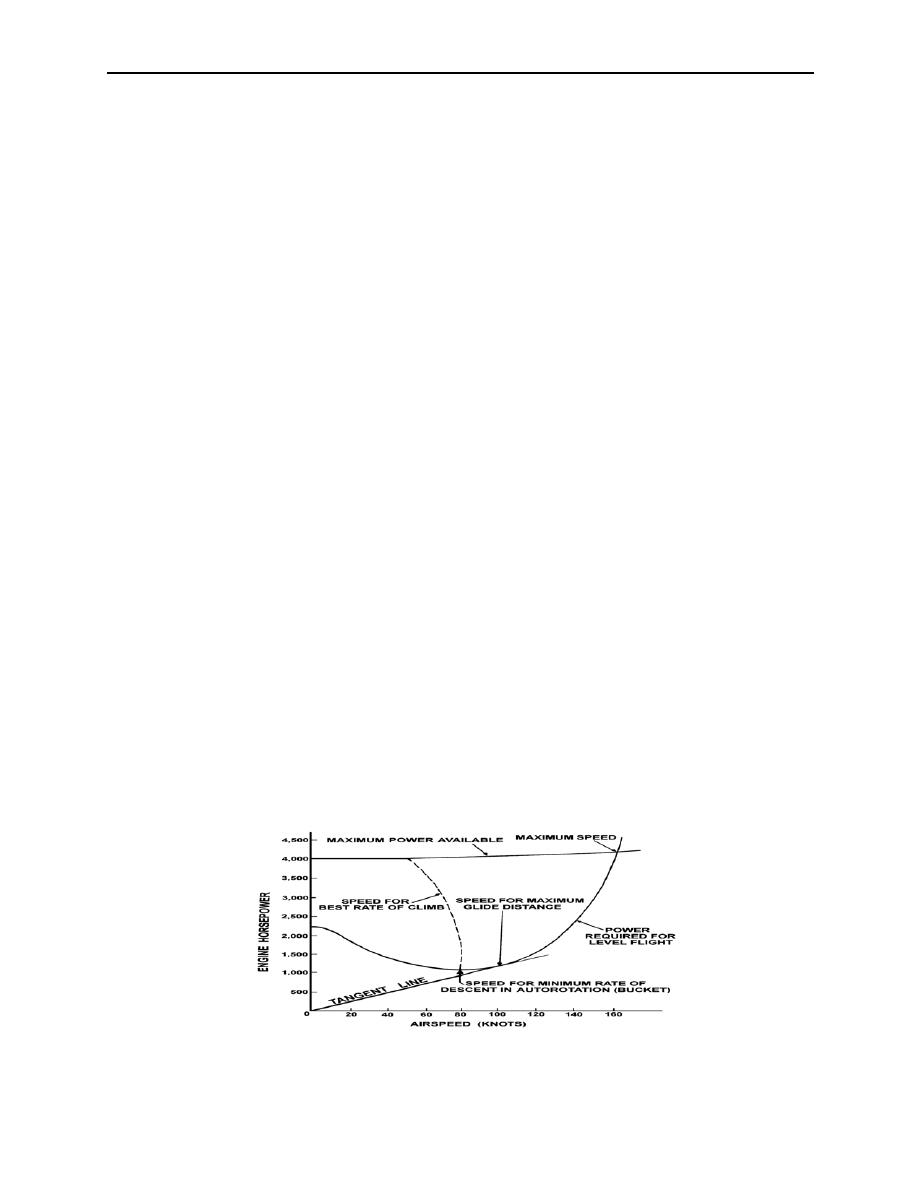 |
|||
|
|
|||
|
|
|||
| ||||||||||
|
|  CHAPTER 3
HELICOPTER AERODYNAMICS WORKBOOK
How much power does it take? In a hover, two types are necessary - induced and profile
power. Induced power, which can be thought of as "pumping power," is power associated with
the production of rotor thrust. This value is at its highest during a hover (60 - 85% of total main
rotor power) and decreases rapidly as the helicopter accelerates into forward flight. The increase
in mass flow of air introduced to the rotor system reduces the amount of work the rotors must
produce to maintain a constant thrust. (This concept will be explained in greater detail in a later
section). Therefore, induced power decreases to hover power with an increase to maximum
forward speed.
Profile power, which can be thought of as "main rotor turning power," accounts for 15 - 45%
of main rotor power in a hover and is used to overcome friction drag on the blades. It remains at a
relatively constant level as the helicopter accelerates into forward flight due to the compensatory
effect of the decrease in profile drag on the retreating blade and the increase in profile drag on the
advancing blade.
In forward flight, parasite power joins forces with induced and profile power to overcome
the parasite drag generated by all the aircraft components, excluding the rotor blades. Parasite
power can be thought of as the power required to move the aircraft through the air. This power
requirement increases in proportion to forward airspeed cubed. Obviously, this is inconsequential
at low speed, but is significant at high speed and is an important consideration for helicopter
designers to minimize drag. This is a challenging task due to design tradeoffs of the high weight
and cost of aerodynamically efficient designs versus structural requirements dictated by required
stiffness, mechanical travel, and loads.
The smaller horizontal force, H-force, is produced by the unbalanced profile and induced
drag of the main rotor blades. Tilting the rotor disc forward from a fraction of a degree at low
speed to about 10 at max speed compensates for this.
POWER REQUIRED AND POWER AVAILABLE
In the interest of better effectiveness and safety, different flight regimes are performed more
efficiently at different forward speeds. The bowl-shape of the power required curve graphically
illustrates the reason why (figure 3-3). Optimum speeds determined by this curve are maximum
loiter time, minimum rate of descent in autorotation, best rate of climb, and maximum glide
distance.
Figure 3-3
3-4 HELICOPTER POWERED FLIGHT ANALYSIS
|
|
Privacy Statement - Press Release - Copyright Information. - Contact Us |